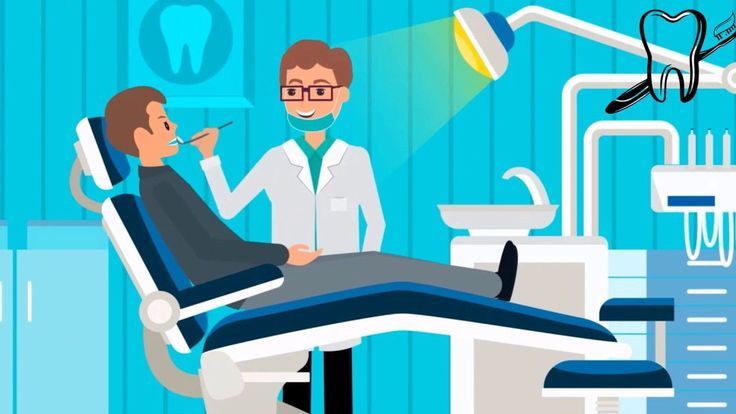10 Proven Dental SEO Tactics to Boost Your Practice

Most people don’t think about finding a dentist until they need one. When a toothache strikes or it’s time for a check-up, their first move is often a quick search online. If your dental practice doesn’t appear on the first page of results for searches like “dentist near me” or “emergency dental services”, you’re missing out on a significant number of potential patients.
Effective Search Engine Optimisation (SEO) is the key to ensuring your practice shows up when and where it matters most. A strong online presence builds trust, attracts new patients, and ultimately grows your business. This guide will walk you through ten proven dental SEO marketing tactics that can help you climb the search rankings, connect with your local community, and fill your appointment book.
Master Local SEO for Dentists
Local SEO is the foundation of any successful dental marketing strategy. It’s all about making your practice visible to people in your specific geographic area. When someone searches for a “dentist in [your city]”, you want your practice to be at the top of the list.
1. Optimise Your Google Business Profile
Your Google Business Profile (GBP) is one of the most powerful free marketing tools available. It’s the information box that appears in Google Maps and on the right side of the search results page. An optimised profile can dramatically increase your visibility.
To make the most of your GBP, ensure you:
- Claim and verify your listing: This is the first and most crucial step.
- Complete every section: Fill out your business name, address, phone number, website, and hours of operation. Make sure this information is consistent everywhere online.
- Select the right categories: Choose “Dentist” as your primary category, and add secondary categories like “Cosmetic Dentist” or “Paediatric Dentist” if they apply.
- Upload high-quality photos: Include pictures of your office (inside and out), your team, and your equipment. This helps potential patients feel more comfortable before they even step through the door.
- Encourage patient reviews: Positive reviews are a major ranking factor and build social proof.
2. Build Local Citations
Citations are online mentions of your practice’s name, address, and phone number (NAP). Consistency is key here. Your NAP information should be identical across all platforms, including online directories like Yelp, Healthgrades, and the Yellow Pages. Inconsistent information can confuse search engines and hurt your rankings. Use a tool to check for and clean up inconsistencies.
3. Get More Patient Reviews
Google sees reviews as a strong signal of a business’s credibility and quality of service. Actively encourage your happy patients to leave reviews on your Google Business Profile and other relevant sites. You can do this by sending a follow-up email after their appointment with a direct link to your review page. Responding to all reviews—both positive and negative—shows that you value patient feedback and are engaged with your community.
Create High-Value Website Content
Your website is the digital front door to your practice. It needs to be professional, user-friendly, and packed with helpful information that answers potential patients’ questions.
4. Target Dental-Specific Keywords
To attract the right audience, you need to use the right keywords. Think about what terms people would use to find your services. Your keyword list should include:
- Service-based keywords: “teeth whitening”, “dental implants”, “Invisalign”.
- Location-based keywords: “dentist in Brooklyn”, “emergency dentist NYC”.
- Question-based keywords: “how much do veneers cost” and “signs of a cavity”.
Use tools like Google Keyword Planner or Ahrefs to research keywords with good search volume and low competition. Integrate these keywords naturally into your website’s page titles, headings, and body content.
5. Create Service Pages for Each Treatment
Don’t lump all your services onto one page. Create a dedicated page for each major treatment you offer, such as cosmetic dentistry, orthodontics, root canals, and paediatric care. This allows you to go into detail about each service, answer common questions, and target specific keywords. For example, a detailed page on “Dental Implants” is more likely to rank for that search term than a general “Our Services” page.
6. Start a Dental Blog
A blog is a fantastic way to establish your practice as an authority in the dental field and attract traffic through informational content. Write posts that answer common questions your patients have.
Blog topic ideas include:
- “5 Foods That Can Stain Your Teeth”
- “What to Expect During a Root Canal”
- “How to Care for Your Invisalign Aligners”
Each post is an opportunity to rank for new keywords and provide genuine value to your readers. Make sure to include a call to action at the end of each post, encouraging readers to book an appointment.
Focus on Technical SEO Health
Technical SEO refers to the behind-the-scenes optimisations that help search engines crawl and index your website more effectively. While it might sound complex, getting the basics right can make a huge difference.
7. Ensure Your Website is Mobile-Friendly
More than half of all web traffic now comes from mobile devices. Google prioritises mobile-friendly websites in its search results, so a responsive design is non-negotiable. Your website should look great and be easy to navigate on any device, from a desktop computer to a smartphone. You can use Google’s Mobile-Friendly Test to see how your site performs.
8. Improve Your Page Speed
Website loading speed is a critical ranking factor. If your site takes too long to load, visitors will leave, and your bounce rate will increase. Use Google’s PageSpeed Insights tool to analyse your site’s performance and get recommendations for improvement. Common ways to speed up your site include compressing images, enabling browser caching, and minimising code.
Build Authority and Trust
Building your practice’s authority online involves signalling to search engines that you are a credible and trustworthy source of information.
9. Get High-Quality Backlinks
Backlinks are links from other websites to yours. They act as “votes of confidence” in the eyes of search engines. A backlink from a reputable source, like a local news outlet, a health-related blog, or a dental association, can significantly boost your authority. You can earn backlinks by:
- Sponsoring local events or charities.
- Guest posting on relevant blogs.
- Joining local business associations.
- Creating valuable content that others want to share.
10. Add Schema Markup
Schema markup is a type of code you can add to your website to help search engines better understand your content. For a dental practice, you can use specific schema types for “Dentist”, “Medical Clinic”, and “Local Business”. This can help your website stand out in search results with rich snippets, such as star ratings, opening hours, and appointment booking links.
Take Your Dental Practice to the Next Level
Implementing these ten dental SEO tactics will help you build a powerful online presence that attracts a steady stream of new patients. SEO is a long-term strategy, and consistency is key. By focusing on local visibility, creating valuable content, ensuring your website is technically sound, and building your authority, you can establish your practice as the top choice in your community.
Start by optimising your Google Business Profile and creating dedicated service pages. As you build momentum, you’ll see your rankings climb and your appointment book fill up.



